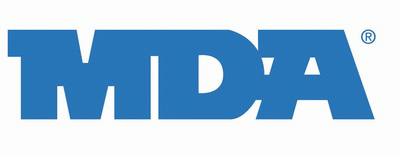Thursday 13 - Marines
Posted: Thursday, February 01, 2007 by Travis Cody in
For my Thursday 13 this week, I have decided to show my respect for the service of United States Marines. I have two cousins currently in the Corps. I lost four buddies to events in and surrounding Desert Storm. And I had chosen to be a Marine, but was unable to fulfill that commitment when I had both knees wrecked playing football in high school.
My selections are random, and based on accounts I have read in the book Semper Fi, The Definitive Illustrated History of the U.S. Marines (Sterling Publishing, 2005), as well as the book USMC A Complete History (Marine Corps Association, 2002).
1. Gunnery Sergeant Daniel J. Daly was awarded two Medals of Honor, the first as a young Private in China when he held off sustained attacks at his post on the American Legation Tartar Wall. The second was earned while serving with the 15th Company of Marines at Fort Liberte in Haiti. The Gunny is quoted as saying "Any officer can get by on his sergeants. To be a sergeant you have to know your stuff. I'd rather be an outstanding sergeant than just another officer."
2. Major General John A. Lejeune commanded the 4th Marine Brigade attached to US Army 2nd Infantry Division in France in World War I. The Marines were initially rejected for service in WWI, finally entering full combat under Army command in 1918. After the battle of Belleau Wood, General Lejeune took command of the Army 2nd. From 1920 to 1929, General Lejeune served as commandant of the Corps.
3. Gunnery Sergeant Earnest A. Janson was awarded both the Army and Navy-Marine Medal of Honor for his quick and decisive action at Chateau-Thierry, France in June 1918 during the battle of Belleau Wood. While organizing the defense of of his position, he identified an enemy threat and launched his unit in a direct attack against five light machine guns. His actions forced the enemy to withdraw from a position that could have devastated his unit with machine gun fire.
4. 1stLt Clifton B. Cates, during the battle of Belleau Wood, captured and held the village of Bouresches with dwindling supplies and ammunition and suffering heavy casualties, preventing an enemy envelopment of strategic positions. Of his situation he is quoted as reporting "I have only two men out of my company and 20 out of some other company. We need support, but it is almost suicide to try to get here as we are swept by machine gun fire and a constant barrage is on us. I have no one on my left and only a few on my right. I WILL HOLD." Cates later commanded the 4th Marine Division on Iwo Jima and became the 19th commandant of the Corps in 1948.
5. Major Alfred Cunningham was the first Marine aviator and commanded 1st Marine Aviation Force in 1918.
6. The 453 members of 1st Marine Defense Battalion on Wake Island who, along with 69 Sailors and 1200 civilian construction workers, stood off the invading Japanese for two weeks in December 1941. Early radio calls of "send us more Japs" eventually gave way to reports of "Enemy on island. Issue in doubt." The garrison surrendered and entered Japanese captivity for the duration of the war.
7. The Marines of Easy Company who raised the first flag on Iwo Jima's Mt Suribachi on 23 Feb 1945 were Pfc Louis C. Charlo, Sgt Henry O. Hansen, platoon Sgt Ernest I. "Boots" Thomas, 1stLt Harold G. Schrier, Pfc James R. Michels, and Cpl Charles W. Lindberg. Sgt Lou Lowery took that photograph. When the flag was deemed too small, it was lowered and replaced by a larger flag. The second Pulitzer Prize winning photograph was taken by AP photographer Joe Rosenthal. The Marines in the second photograph are the subject of the book (and Clint Eastwood film) Flags of Our Fathers. They were Cpl Ira H. Hayes, Cpl Rene A. Gagnon, Pfc Franklin R. Sousley, Sgt Michael Strank, Pharmacist's Mate Second Class John H. Bradley, and Cpl Harlon H. Block.
8. First Lieutenant Baldomero Lopez, a Marine platoon commander in Inchon, Korea, attacked a bunker with a grenade in an effort to relieve his Marines from deadly enemy fire. As he prepared to throw the grenade, he was hit with small arms fire in the chest and shoulder. He dropped the grenade and was unable to control and throw it, so he pulled it to himself and used his body to shield Marines near him from the exploding shrapnel. He was posthumously awarded the Medal of Honor for his sacrfice.
9. Sergeant Robert E. O'Malley was the first of 57 Marines awarded Medals of Honor for service in Vietnam from 1965 through 1971. Sergeant O'Malley repeatedly led attacks against entrenched Vietcong forces, receiving three separate wounds. He covered his squad's withdrawal to a landing zone, and remained on the ground until the last of his Marines boarded the helicopters.
10. Lt General Lewis B. "Chesty" Puller was the most decorated Marine in history. In 37 years of action against Haitian and Nicaraguan guerrillas, and the forces of Japan, North Korea, and China, the general was awarded five Navy Crosses, Silver and Bronze Stars for valor, the Army Distinguised Service Cross, three Air Medals, Purple Hearts for wounds, and numerous campaign ribbons. He led 1st Battalion 1st Marines at Guadalcanal as a lieutenant colonel, and was promoted full colonel two years later in command of the assault on Peleliu. He also commanded the 1st Marines in Korea at Inchon, Seoul, and the Chosin Reservoir.
11. General Alfred M. Gray became Marine commandant in 1987 and immediately began to turn the focus of the Corps back to its mission in the field. He changed the designation amphibious units to Marine Expeditionary Units. He changed the development and education command at Quantico to Marine Corps Combat Development Command. He established five major combat components of the command, and worked diligently to develop training, operational concepts, studies, doctrine, and plans to conform with his understanding of the Marine Corps mission in the field. His innovation and forward thinking set the stage for the fast action ready forces ultimately employed in the fight against terrorism.
12. General Peter Pace is the first Marine to serve as chairman of the Joint Chiefs of Staff, representing the Commandant of the Marine Corps, the Chief of Naval Operations, the Chief of Staff of the Army, and the Chief of Staff of the Air Force to the Secretary of Defense. A decorated Vietnam infantry combat veteran, General Pace also commanded the Marine operation in Somalia and was head of U.S. Southern Command.
13. Major General James N. Mattis, Commanding General 1st Marine Division, prior to the invastion of Iraq is quoted as follows: "When I give you the word, together we will cross the Line of Departure, close with those forces that choose to fight, and destroy them. Our fight is not with the Iraqi people, nor is it with members of the Iraqi army who choose to surrender. While we will move swiftly and aggressively against those who resist, we will treat all others with decency, demonstrating chivalry and soldierly compassion for people...You are part of the world's most feared and trusted fighting force. Engage your brain before you engage your weapon. Share your courage with each other as we enter Iraq. Keep faith in your comrades to your left and right and in the Marine Air cover overhead...carry out your mission and keep your honor clean. Demonstrate to the world there is 'no better friend, no worse enemy' than a U.S. Marine."
I hope you will understand that I post this today in honor of those who serve. I make no political statement in support of or against war. I make no boasts to the glory of combat. I am humbled and fascinated by the service of these and others like them. I am intrigued by their stories.
This post is dedicated to my cousin J, my cousin K, four guys I miss every day, and my friend Dixie's son Matt.
Semper Fi.

















I'm proud to be first here to say that was a wonderful tribute to some great men. I was at a dinner where General Peter Pace spoke - he was amazing. Thanks for sharing this TT :)